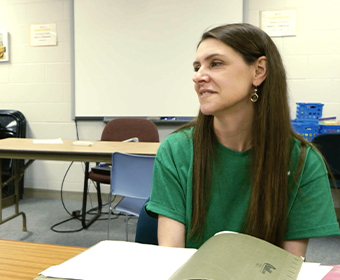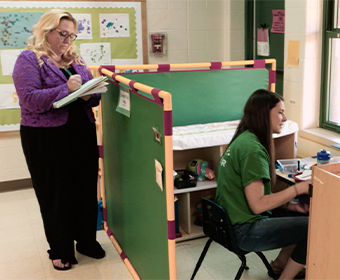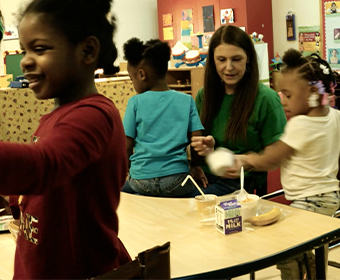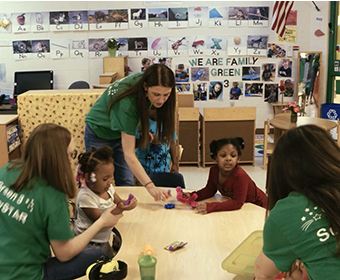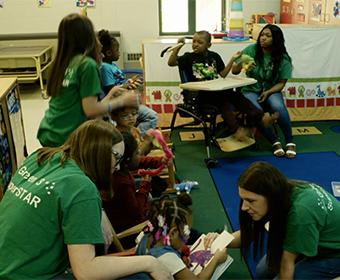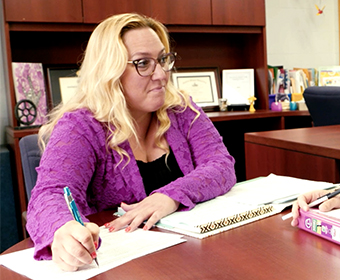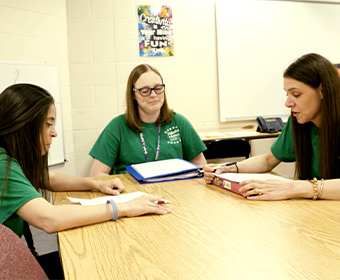This Pre-Kindergarten Life Skills classroom is purposefully planned to support student IEP learning goals through large group instruction and discrete learning trials, as well as areas for individual play and choice-making. In this video, Ellen Ramsey will introduce you to the “why, what, and how” of organizing her classroom for young children who have significant cognitive delays. Each part of the learning environment is customized to maximize student emotional and physical safety through adaptive learning experiences. The different parts of the classroom facilitate engagement through adult-facilitated/individual learning experiences to enhance the “fun” of play. Pay special attention to how the classroom’s environment and activities are organized to support functional language, independence for completing routines and tasks, and “how to do school” (2e-Organizing Physical Environment: There is total alignment between the learning activities and the physical environment; Distinguished).
Resources
- Framework Cluster 1: Clarity of Instructional Purpose and Accuracy of Content “Quick Notes” Observation Tool
- Framework Cluster 2: Safe, Respectful, Supportive, and Challenging Learning Environment & Cluster 3: Classroom Management “Quick Notes” Observation Tool
- Framework Cluster 4: Student Intellectual Engagement & Cluster 5: Successful Learning for ALL “Quick Notes” Observation Tool
- Framework Cluster 6: Professionalism “Quick Notes” Observation Tool
- Early Learning Planning Conversation Protocol
- Early Learning Reflection Conversation Protocol
- The 2013 Framework for Teaching Evaluation Rubrics (22 components)
- The Framework for Teaching: Six Clusters Supporting High Level Teaching and Learning, 2019 Edition

